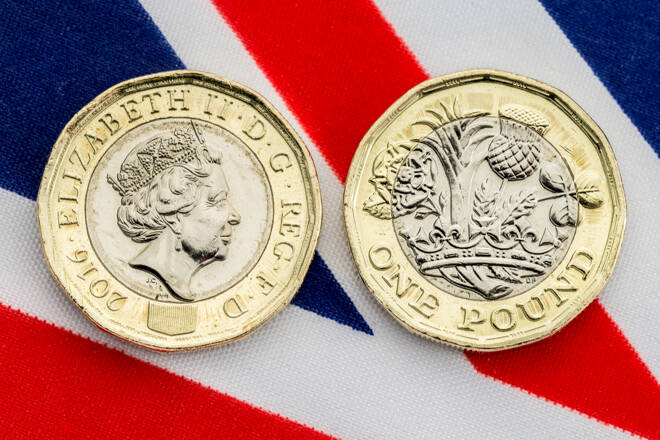Advertisement
Advertisement
GBP to USD Forecast: UK Services PMI and Bank of England Speeches in Focus
By:
Economic indicators, Bank of England focus, and US Jobs Report impact GBP/USD in the financial spotlight.
Highlights
- The GBP/USD gained 0.43% on Thursday, ending the session at $1.22029.
- On Friday, the UK Services PMI and Bank of England speeches need consideration,
- The US Jobs Report and ISM Services PMI could materially impact demand for the US dollar.
The Thursday GBP/USD Overview
On Thursday, the GBP/USD gained 0.43%. Reversing a 0.01% loss from Wednesday, the GBP/USD pair ended the session at $1.22029. The GBP to USD fell to a low of $1.21335 before rising to a Thursday high of $1.22255.
UK Services Sector and the Bank of England in Focus
On Friday, the UK services sector will be in the spotlight. The finalized S&P Global/CIPS Services PMI for October will draw investor interest. According to the preliminary survey, the PMI fell from 49.3 to 49.2. An upward revision could give the GBP/USD a boost.
The UK services sector contributes over 70% to the economy. An upward revision would reduce the impact of weak service sector activity on growth. However, investors must consider the sub-components, including new orders, prices, and employment. A deteriorating demand environment could fuel fears of a prolonged UK recession.
Away from the economic indicators, the Bank of England will be in the spotlight for the second session. BoE Chief Economist Huw Pill and MPC member Jonathan Haskel are on the calendar to speak. Huw Pill will attend the Monetary Policy Report National Agency briefing, which should have more impact on the GBP/USD.
US Jobs Report and Services Sector in the Spotlight
On Friday, the US Jobs Report and ISM Service PMI will draw investor attention. Softer labor market conditions could close the door to the Fed rate hike cycle. On Wednesday, Fed Chair Powell discussed the need for softer labor market conditions for price stability. Wage growth and nonfarm payroll numbers will likely have the most influence on the GBP/USD.
Softer wage growth and deteriorating labor market conditions impact disposable income and consumer confidence. As a result, consumers could curb spending on non-essential items, dampening demand-driven inflationary pressures.
However, the ISM Services PMI will also influence the appetite for the US dollar. An unexpected contraction across the services sector could fuel fears of a hard landing. The US services sector contributes over 70% to the economy.
Short-Term Forecast
Near-term GBP/USD trends will hinge on the US Jobs Report and UK economic indicators. Signs of further deterioration in the UK economy could raise the bets on a pre-summer 2024 BoE rate cut.
GBP to USD Price Action
Daily Chart
The GBP/USD pair remained below the 50-day and 200-day EMAs, affirming bearish price signals.
A GBP/USD break above the 50-day EMA would support a move to the 200-day EMA and $1.24410 resistance level.
The UK and US Services PMIs, the US Jobs Report, and central bank speeches will be the focal points.
A GBP/USD fall through the $1.21216 support level would bring sub-$1.20 into play.
The 14-period daily RSI reading of 49.35 indicates a GBP/USD fall through the $1.21216 support level before entering oversold territory.
4-Hourly Chart
The GBP/USD holds above the 50-day EMA while sitting below the 200-day EMA, sending bullish near-term but bearish longer-term price signals.
A GBP/USD move through the 200-day EMA would support a move toward the $1.24410 resistance level.
However, a break below the 50-day EMA and the $1.21216 support level would give the bears a run at $1.20.
With an RSI reading of 57.20 for the 14-period 4-hourly Chart, the GBP/USD must move through the 200-day EMA before entering overbought territory.
About the Author
Bob Masonauthor
With over 20 years of experience in the finance industry, Bob has been managing regional teams across Europe and Asia and focusing on analytics across both corporate and financial institutions. Currently he is covering developments relating to the financial markets, including currencies, commodities, alternative asset classes, and global equities.
Latest news and analysis
Advertisement
